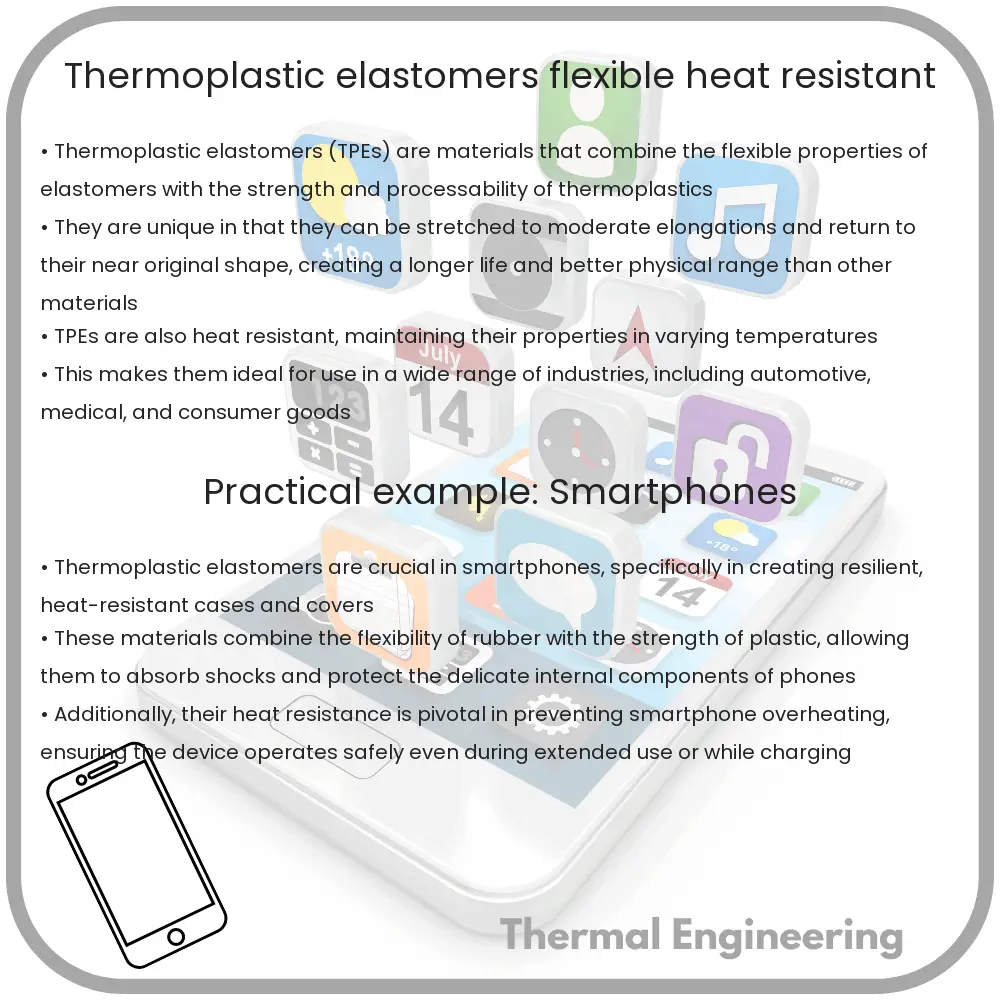Explore the unique properties and versatile applications of Thermoplastic Elastomers (TPEs), materials that combine the benefits of plastics and rubbers.

Understanding Thermoplastic Elastomers: Properties and Applications
Thermoplastic elastomers (TPEs), often referred to as thermoplastic rubbers, are a class of copolymers or a physical mix of polymers (usually a plastic and a rubber) that consist of materials with both thermoplastic and elastomeric properties. While most elastomers are thermosets, thermoplastic elastomers are remarkably easy to use in manufacturing, primarily because they can be stretched to moderate elongations and return to nearly their original shape creating a longer life and better physical range than other materials.
Characteristics of Thermoplastic Elastomers
Thermoplastic elastomers show advantages typical of both rubbery materials and plastic materials. The principal characteristics of these materials are:
- Flexibility: TPEs can perform like rubber but are processed like plastic. They are flexible at room temperature and can be stretched with minimal force applied.
- Heat Resistance: TPEs have excellent heat resistance, maintaining their properties across a wide range of temperatures, depending on their chemical composition. Most of these materials can withstand temperatures as high as 150°C without deforming.
- Chemical Resistance: These materials are generally resistant to common chemicals, making them suitable for various sealing and packaging applications.
In addition, TPEs are also known for being:
- Recyclable: Unlike most traditional rubbers, TPEs can be recycled and reprocessed multiple times without significant degradation of their properties.
- Colorable: They can be easily colored through standard dyeing processes, which makes them versatile for design and aesthetics.
Types of Thermoplastic Elastomers
There are several different types of TPEs, each with unique properties that make them suitable for specific applications:
- Styrenic Block Copolymers (TPE-S or TPS): Commonly used for their strength, flexibility, and clarity. Suitable for applications from medical devices to footwear and automotive components.
- Thermoplastic Polyurethane (TPE-U or TPU): Known for excellent abrasion resistance and mechanical properties, used in automotive instrument panels, caster wheels, and power tools.
- Thermoplastic Olefins (TPE-O or TPO): Characterized by their impact resistance and weatherability, these are frequently used in automotive exteriors and roofing membranes.
- Thermoplastic Vulcanizates (TPE-V or TPV): Recognized for their high-temperature resistance and compression set properties, ideal for seals, gaskets, and hoses in automotive and industrial applications.
- Thermoplastic Polyester (TPE-E or TPC): Offers high chemical resistance and strength, commonly used in mechanical parts and high-performance applications.
Applications of Thermoplastic Elastomers
Due to their versatile properties, TPEs find widespread use across different industries:
- Automotive: Applications include bumpers, dashboards, door panels, and airbag covers.
- Building and Construction: Used in window seals, pipe gaskets, and roofing sheets.
- Medical Devices: Ideal for catheters, tubes, and mask seals due to their flexibility and compliance with medical standards.
- Consumer Products: Commonly seen in toothbrush grips, toys, and mobile phone cases.
In conclusion, thermoplastic elastomers represent a critical development in the field of material sciences, combining the physical advantages of rubber with the processing capabilities of plastics. Their capacity to be molded repeatedly makes them highly desirable for a wide range of applications, contributing globally to more sustainable manufacturing practices.